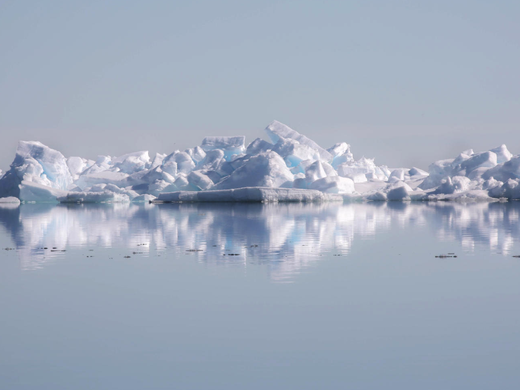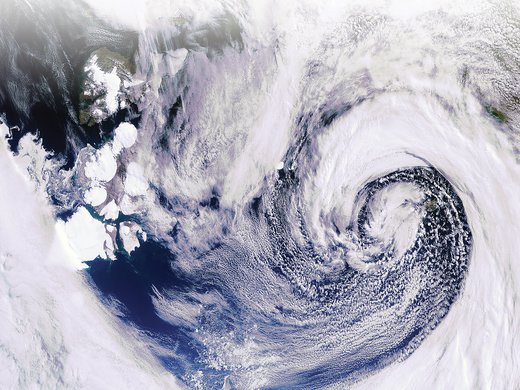Snow and the frigid Arctic wind overwhelmed me as I waited with excitement outside Iqaluit’s tiny airport for a shuttle to take me to my hotel. I noticed a group of young teenage girls and boys huddled in the corner, puffing on their cigarettes. It quickly becomes evident that smoking is very common in Iqaluit, even among pre-teens. Considering a pack of cigarettes costs close to CDN$25, it is difficult to believe people in the North smoke so regularly. In fact, 59 percent of Nunavut’s population are reported smokers, considerably above the Canadian average (Statistics Canada 2011). Many other items cost far more in the North. The high cost of food, for instance, is one of the most significant challenges facing Northern communities.
Over 50 students from across Canada gathered in Iqaluit, Nunavut from October 30 to November 2, 2014 for the first ever Arctic Youth Ambassador Summit. Global Vision, a national not-for-profit organization that engages young future leaders in Canada through education and hands-on experiences, organized the summit. Students had the opportunity to listen to locals, including the youth, and government officials discuss a wide variety of pressing issues concerning the North and consider different perspectives on solving the many challenges facing this beautiful and remote region, including food security and safe Arctic shipping.
The summit was originally intended to focus on the three core themes mandated by the priorities of Canada’s Arctic Council Chairmanship: responsible resource development; sustainable circumpolar communities; and Arctic shipping. However, it did not take long to realize, especially after engaging with locals, that we needed to unpack these issues, and even add new ones. This commentary provides a critical overview of the key topics that emerged from the summit.
Economic Development and Natural Resources
Although Nunavut’s economy has experienced growth, there is limited development, and unemployment among the 34,000 Nunavummiuts remains high (Government of Nunavut n.d.) The majority of Nunavut’s population is young, with a median age of almost 25 years, compared to a Canadian median of 40 years (ibid.). With the highest growth rates in Canada, it is expected to increase over the next 20 years to around 45,000. Infrastructure development will, therefore, be critical in the coming decades.
Key sectors of Nunavut’s economy include: mining, fishing, construction, tourism, government, and arts and culture. There is strong potential for the oil and gas sector to play a vital role in Canada’s North, especially as it becomes increasingly more accessible. A study by the US Geological Survey suggests that 13 percent of the world’s oil and 30 percent of its natural gas are in the Arctic, making this region possibly the last major source of oil and gas (Bird et al. 2008).
As the world’s fifth-largest energy producer and with 40 percent of its landmass situated in the Arctic, Canada has considerable oil and gas interests in the region. In 2012, Prime Minister Stephen Harper stated during his annual summer tour of the Arctic that Canada’s economic future lies within the natural resources found in the Arctic (Press 2012). Natural resource development must be sustainable, responsible and respectful of Northerners’ interests and concerns.
Safe Arctic Shipping
The Northwest Passage (NWP), a route through the Arctic Ocean, connects the Pacific and Atlantic Oceans.The NWP reduces European-Asian shipping routes by 8,000 km and east coast North American-Asian routes by 7,000 km over the standard Panama Canal route. Faster-than-expected summer sea ice melt has created opportunities for shipping in the Arctic, with the NWP providing a cheaper and more efficient method of transporting goods. This is appealing to governments and militaries, and also benefits the tourism industry and private sector commercial interests.
The Arctic’s harsh climate and fragile ecosystem pose challenges to safe shipping.There is enormous room for improvement when it comes to safe Arctic shipping. Weak infrastructure, a limited search and rescue capacity, limited ice patrols and poorly qualified ice water navigators are cause for concern.
Despite the economic rewards that would come with increased shipping and activity in the Arctic, many Northerners are apprehensive about the negative impact this will likely have on the environment and Arctic species, from the narwhal to the polar bear, which many depend on for food and other uses.
Food Security
A popular Facebook group, Feeding My Family, has played an important role in raising awareness of the extremely high food prices in Nunavut. There have been wide protests against the high cost of food, and store owners have harassed some customers who posted photographs of expired food and high price tags. The creator of this initiative, Leesee Papatsie, spoke to us about how expensive food is and the overall high cost of living in Nunavut.
According to Papatsie, it costs over CDN$22,000 a year to feed a family of four in Nunavut. It is important to note that most households have families larger than four.There is a clear gap between income and food prices and we were told that families often have to choose between buying food and paying bills. The high cost of food prevents many Northerners from leading healthy and happy lives. The Inuit population has been able to survive this reality for two main reasons: hunting and a culture of sharing.
Greenhouses, which would allow residents to grow fresh produce, are often suggested as a potential solution to food security in the Arctic. However, as locals pointed out, greenhouses have high maintenance costs. In addition, agriculture is not part of Inuit food culture, and many Inuit are unaccustomed to a diet of fruits and vegetables.
Mental Health
Mental illness is a widespread problem in the North; however, very little is being done to address mental health issues in the region. There is a stigma around mental health in the community; as a result, people tend not to ask for help when they need it most and may keep their feelings to themselves.
A local activist who works to spread awareness around mental health issues told us that if Nunavut were its own country, it would have the second-highest suicide rate in the world. Depression and sexual and physical abuse are common in the North. One in two Inuit adults have been victims of abuse. The rates of depressive disorders and other mental illnesses in Nunavut are well above the Canadian average. Breaking down the stigma and implementing long-term, effective solutions to address mental health in the North need to be priorities.
Canada’s Chairmanship of the Arctic Council will come to an end in April 2015. Canada must continue to look forward and work closely with its Arctic partners to ensure a prosperous, safe and secure Arctic. Northerners are strong and proud, but, most importantly, they are determined to have a bright future while maintaining their heritage and culture. The youth are the future and their voices will be represented in the communiqué that Global Vision will submit to the Government of Canada in the coming months.
I am grateful to the Arctic Governance project at CIGI, NPSIA at Carleton University and others in facilitating my participation in the Arctic Youth Ambassador Summit.
Works Cited
Bird, K. J., R. R. Charpentier, D. L. Gautier, D. W. Houseknecht, T. R. Klett, J. K. Pitman, T. E. Moore, C. J. Schenk, M. E. Tennyson and C. J. Wandrey. 2008. “Circum-Arctic Resource Appraisal: Estimates of Undiscovered Oil and Gas North of the Arctic Circle.” US Geological Survey. http://pubs.usgs.gov/fs/2008/3049/.
Government of Nunavut. n.d. “Nunavut FAQs.” www.gov.nu.ca/eia/information/nunavut-faqs.
Press, J. 2012. “Future Lies in Arctic Resource Development, Harper says.” Postmedia News, August 21.
Statistics Canada. 2011. “Smoking, 2011.” www.statcan.gc.ca/pub/82-625-x/2012001/article/11668-eng.htm.
Jessica Nasrallah is a master's candidate at the Norman Paterson School of International Affairs (NPSIA) at Carleton University in Ottawa.


